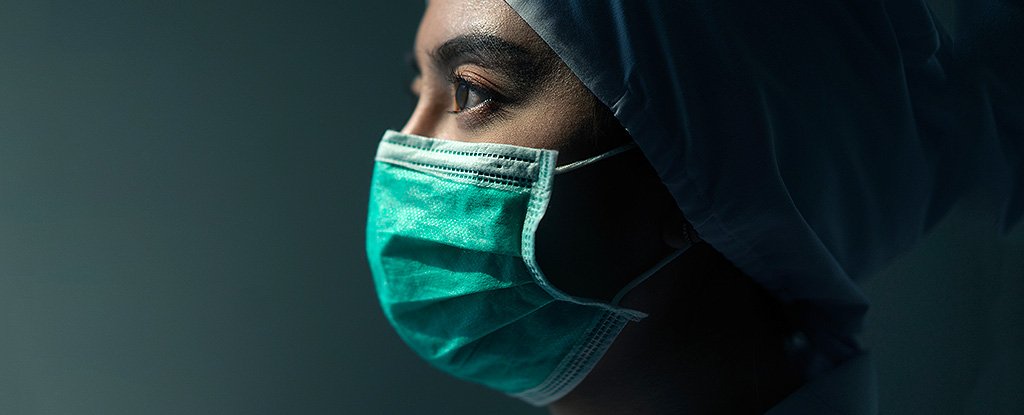
Scientists have concluded that surgical masks can reduce the spread SARS-CoV-2.
The highest-quality, gold standard type of clinical trial known as a random controlled trial should result in "ending any scientific debate about whether masks are effective at fighting the spread of COVID-19," Jason Abaluck, Yale economist and one of the lead authors of the study, stated to The Washington Post.
Megan Ranney, an emergency medicine doctor and Brown University professor, said to the Post that "this is an incredibly difficult but important study to do."
"Anti-mask folks keep saying, "Where's the random controlled trial?" Here you go.
Related: Coronavirus variants - Here's how SARS-CoV-2 mutants compare
Scientists have known for the past year that masks help to reduce the spread of the virus. It's difficult to determine how masks reduce transmission in real life, as not everyone masks, uses the same mask quality, or wears masks correctly.
These studies simply compare the mask-wearing behaviors with infection rates in different regions. However, observational studies can be complicated by many other factors.
Randomized trials, in which individuals are randomly assigned to receive medical intervention or not, are the strongest form of evidence. These trials are costly and time-consuming, especially if the behavior is masking.
Researchers from the US and Bangladesh tested the effectiveness and use of masks in 600 villages across Bangladesh. According to the Post, the study involved more than 342,000 adults and is the largest randomized trial on mask usage.
According to the Post, the study was posted on Sept. 1 as a preprint to Innovations for Poverty Action's nonprofit website. It is currently being peer-reviewed for publication by Science.
The trial lasted from November 2020 through April 2021. About 178,000 people were given the intervention and 164,000 did not. According to the study, everyone in the intervention group was given free masks and had ample information about the importance of wearing masks. They also received reminders in person for eight weeks.
The intervention was not given to the people in the control group. Researchers placed observers in the community to monitor how many people wore masks properly and how far they walked away from mosques, markets, and main roads leading to villages and tea stalls.
The researchers conducted a survey of the participants to determine if they had COVID-19-like symptoms between five and nine weeks after the trial began. They then took blood samples from participants who were experiencing symptoms, and tested them for SARS-2 antibodies, approximately 10-12 weeks after the trial began.
Proper mask use tripled in the treatment group, going from 13.3% in the control group to 42.3% in the masking intervention. The researchers also discovered that physical distancing was around 24.1 percent in the observation group, compared to 29.2 percent for the treatment group.
The researchers noted that five months after the trial ended, the "impact" of the intervention had diminished. However, mask wear remained 10% higher in the intervention group than it was in the control group.
7.62 percent of COVID-19-like symptoms were seen in the intervention group, as opposed to 8.62 percent for the control group. Nearly 11,000 people were surveyed by researchers. The intervention resulted in a 9.3 percent reduction in COVID-19 symptoms.
The paper's authors stated that they should not take our results to mean that masks can stop only 10% of COVID-19 deaths.
This is because only 29 people were able to use masks after the intervention. They wrote that "the total impact of near-universal maskingmay be achievable with alternative strategies, or stricter enforcementmay prove to be several times greater than our 10% estimate."
Villages received either surgical or cloth masks. The incidence of symptomatic infections in villages receiving surgical masks was 11.2 percent lower than the control group.
This percentage was even higher for older adults. Those who were 60 years old or older received free surgical masks and other interventions. The incidence of symptomatic infections was 34.7 percent lower than the control group.
The researchers did not find that cloth covers reduced symptoms of infection as compared to control groups.
Although the study is among many that demonstrate the benefits of masking it, it does have some limitations.
The authors noted that although participants were instructed to keep their identities and wear plain clothes, they may have been identified by researchers who were assessing how well they wore masks or physically distanced themselves from the others.
Also, the study couldn't determine if masks made symptoms worse by reducing viral load or if they caused new infections.
Similar content:
11 deadly (sometimes fatal) diseases that have hopped between species
